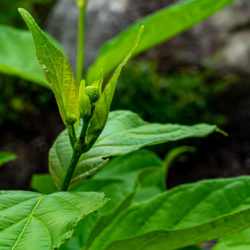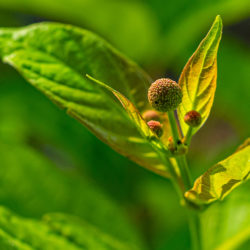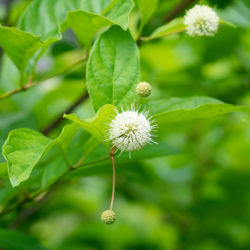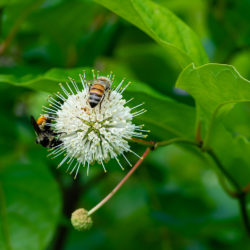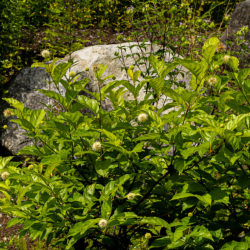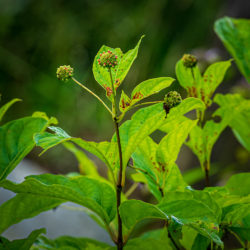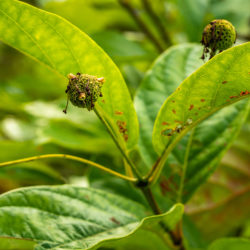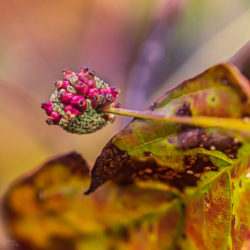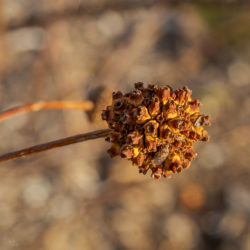Etymology
Cephalanthus is Latin for head (cephalo) and flower (anthos); occidentalis is Latin for western.
Native Habitat
Swamps and pond margins.
Garden Uses
A visually interesting ornamental for landscaping due to both its unusual flowers and seeds, and its twisted multi-stemmed branching. Can be used as a shrub or small tree. Grows well in moist to wet soil. It can survive inundation. Fall color change is not dramatic.
Overview
A multi-stemmed, branching deciduous shrub, typically up to 12 ft tall. It grows well in a variety of moist soils in part shade.
Leaves and Stems
Stems are spreading, multi-branched, often twisted, crooked or leaning. Leaves are simple, opposite, glossy, dark green, paired or in threes at each node, and grow on a petiole (stalk), with each blade up to 8 inches long and a width approximately 1/3 of length. Leaf tip is pointed, margins smooth, with glossy upper surface, and duller underside.
Flowers
Globe-like blooms in summer (June through September), with small, fragrant white to pale-pink flowers, in a 1-inch spherical head, resembling a pincushion, due to a fringe of pistils protruding beyond white corollas. Flowers are distinctive and long-lasting.
Fruit/Seed
Round, button-like balls of dry fruit (nutlets) change from red to black and can persist through winter after the leaves fall. Fruit does not split open when ripe.
Animal Associates
Nectar plant for butterflies, such as Papilio glaucus (tiger swallow-tail), bees, and other insects. Seeds are excellent autumn and winter fodder for ducks and other water and shore birds.
Propagation
Propagation is by seed.
Ethnobotanical Uses
Native Americans are reported to have used roots for blood medicines and muscle inflammation, and bark as anti-inflammatory medicine for rheumatism, muscle inflammation and toothaches.
Garden Location
Performance Hall Garden (see garden map)
Sources
Lady Bird Johnson Wildflower Center
Plant Profile by Kate O’Dell

